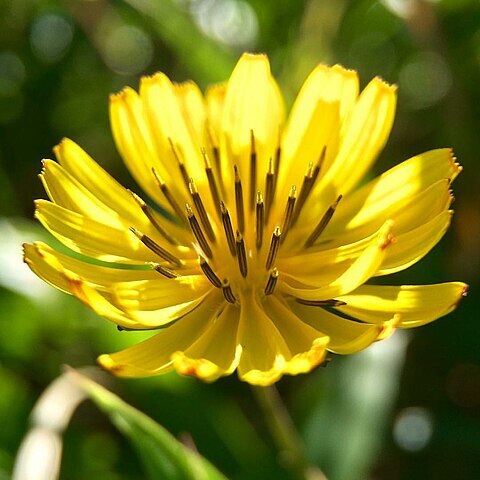Herbs 15-35 cm tall, perennial, glabrous, rosulate. Taproot with lateral shoot-bearing roots producing secondary leaf rosettes. Stems several, flagelliform, long creeping above ground; nodes 1 to several cm apart, most with adventitious roots and a single leaf. Flowering stems from rosettes and leaf axils of creeping stems, erect, to 35 cm, with 0 or 1 leaf. Basal leaves present at anthesis, spatulate, elliptic, or almost linear, 3-25(-35) × 0.5-2(-3) cm, undivided or pinnatifid to pinnatipartite and sometimes lyrately so, base attenuate into a petiole-like portion, margin entire or sinuate-dentate, apex obtuse to acute and mucronulate; lateral lobes (if present) 1 to few pairs, triangular to elliptic, apex acute to obtuse. Stem leaves (if any) similar to basal leaves but smaller. Synflorescence laxly and weakly corymbiform, with 1-6 capitula. Capitula with 20-25 florets; peduncle wiry, 1-20 cm. Involucre cylindric to campanulate, (8-)10-12 × 4-5 mm at anthesis, to 1.4 cm in fruit. Phyllaries abaxially glabrous; outer phyllaries ovate to lanceolate, longest to 4 mm, apex acute; inner phyllaries 8, apex acute. Florets yellow, anther tube and style greenish to blackish upon drying. Achene brown, fusiform, 6-8 mm, apex attenuate into a filiform 2-3 mm beak. Pappus 6-8 mm. Fl. and fr. Mar-May. 2n = 48.
More
A herb. It keeps growing from year to year. It grows 15-35 cm tall. It has a taproot and leaves in a ring. The stems are long and creeping. These form roots at the nodes. The leaves are spoon shaped or narrow and 3-25 cm long by 1-2 cm wide. They can be divided and there can be teeth along the edge.

